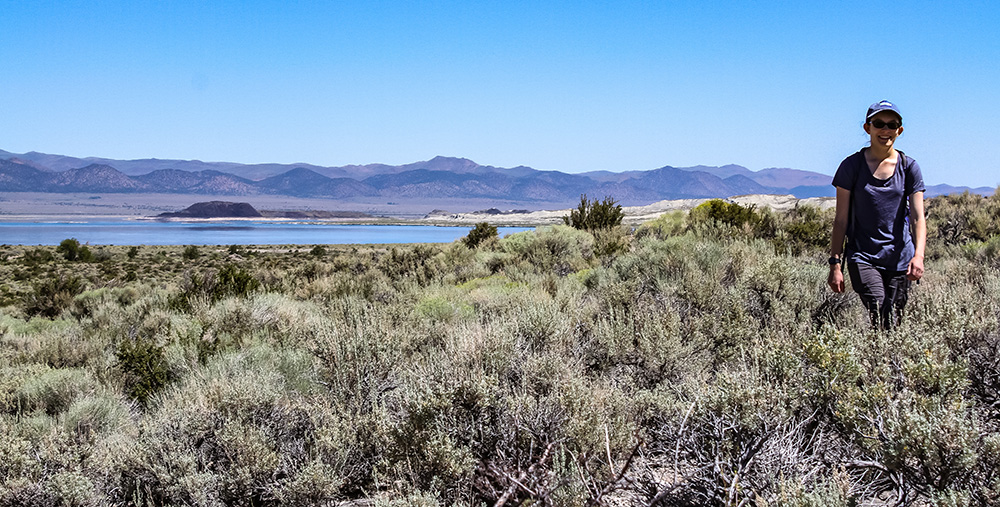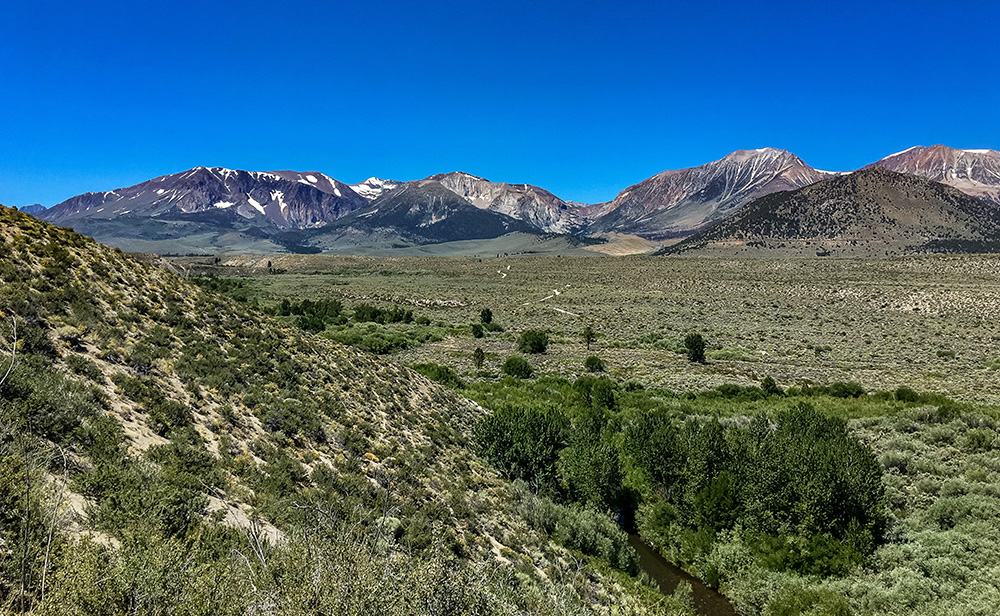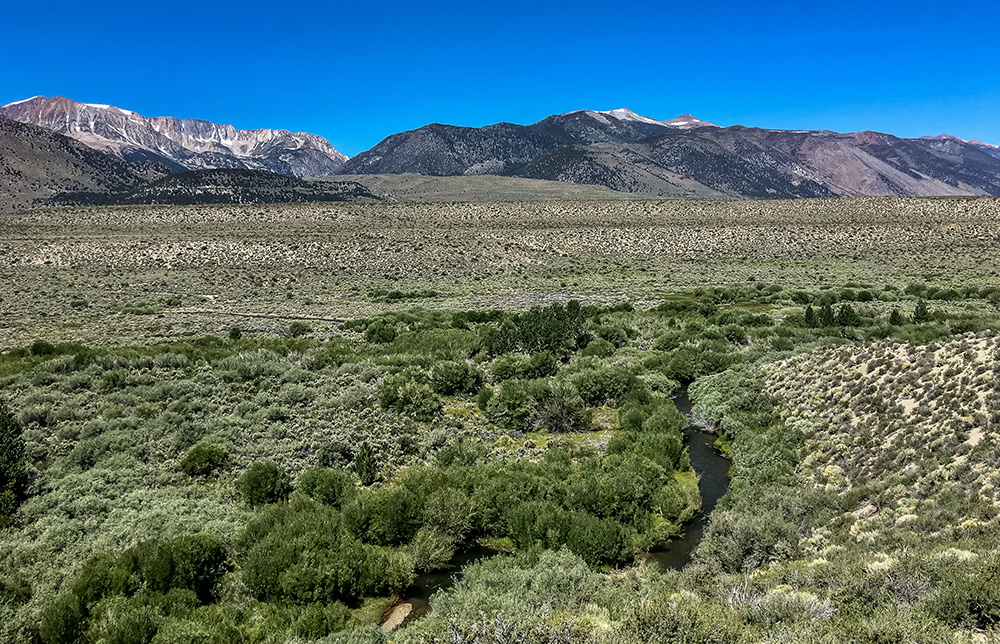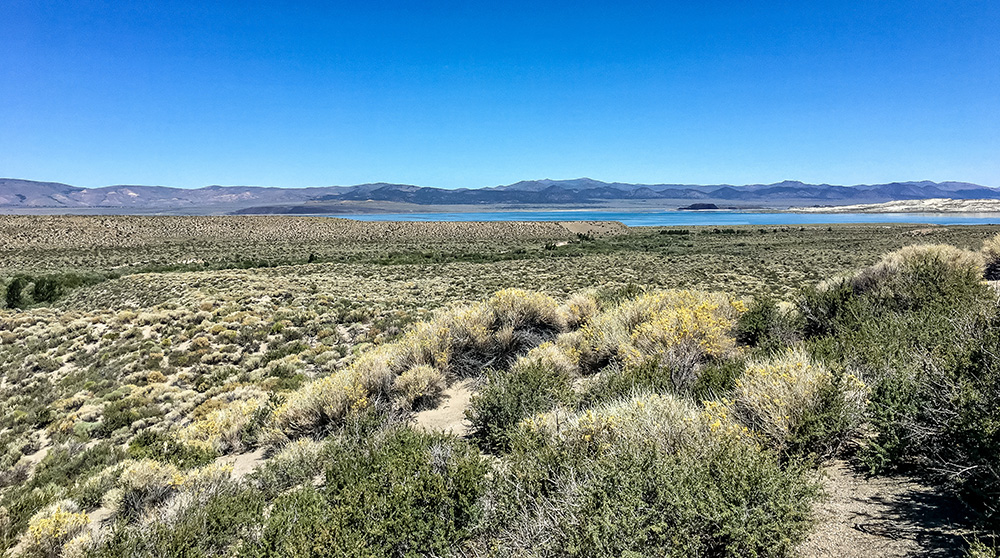
This post was written by Chloe Isaacs, 2019 Mono Lake Intern.
The smell of sagebrush permeates the air. Rush Creek, full and thriving, flows by on its way to Mono Lake. The hot Sierra sun beats down on the brim of my Mono Lake Committee hat as I tramp along behind another Committee intern, Ellie Neifeld, and Restoration Field Technician Robbie Di Paolo.

We head away from the road, pushing through fragrant sagebrush and thorny bitterbrush and occasionally slipping down sandy hills. Eventually we make our way to our destination: a field camera overlooking Rush Creek! The field camera blends in well, sitting unobtrusively out of the way of both humans and animals as it takes one photo every five minutes of Rush Creek.
This field camera is one of the many ways that the Mono Lake Committee monitors the Mono Basin. The photographs taken by the field camera help to show the overall health of the freshwater stream habitat of Rush Creek, and also the more intricate details of how the habitat changes over time. This is especially important to keep track of throughout the spring, summer, and fall after a big winter that adds a large amount of freshly-melted snow to Mono Lake, thus making the lake level rise and bringing new life to the stream habitats surrounding it. Because of the incredibly large snowpack the area received this past winter, Mono Lake was projected to rise a foot and a half from April 1, 2019 to next April 1. Data collected from the Rush Creek field camera will provide valuable visual information about how well the stream habitat is recovering and adapting to this new influx of freshwater coming down from the mountains.

The field camera recording the streamflow of Rush Creek has been taking photos for months. Our little jaunt through the hills to get to it was simple in purpose. The first job on our to-do list: make sure the camera hadn’t fallen over! Field cameras can take a beating from weather, even in the Mono Basin which sits in the rain shadow of the Sierra and gets little precipitation. Luckily, the camera had held up remarkably well. Ellie, Robbie, and I also checked the battery life and switched out the SD card for a new one so we could take a look at the photos it had collected, which numbered in the thousands. We snapped a couple of photos, just as we had been doing throughout our adventure, and then headed back to the road. Ellie and I will go back to check on the camera in the beginning of September.

Keeping an eye on the Rush Creek field camera is one of the many projects that the interns help out with at the Committee. Other projects involve coordinating events like the Refreshments with Refreshing ‘Ologists lecture series, posting on social media, and assisting Robbie with other stream monitoring projects. These projects, many of which allow us to get outside and interact with the public, have been a truly wonderful and rewarding experience. I know I speak for the other interns as well as myself when I say that this summer has been fantastic so far. I’m looking forward to getting back out into the field in a few weeks to check the camera again and see how the fascinating landscape of the Mono Basin has changed.
To learn more about the ongoing restoration work of the Mono Basin, click here!

